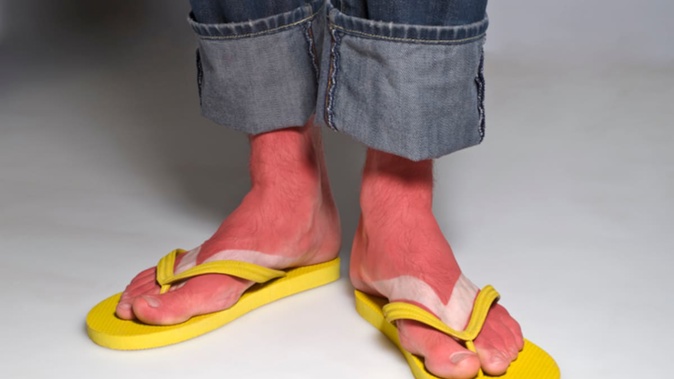
A Belgian man who was visiting Death Valley National Park in the United States was rescued via helicopter at the weekend after suffering third-degree burns on the soles of his feet at the Mesquite Flat Sand Dunes.
According to the National Park Service, it was unclear if the unidentified 42-year-old had lost or broken the jandals he wore to the California park, known to be one of the hottest places on Earth in summer, on a day when the air temperature reached 50.5C.
After the man’s family and other guests to the park carried him to the parking lot, rangers determined it would be best to get him to the hospital quickly due to the pain and severity of his injuries.
Because of the extreme weather, the emergency helicopter wasn’t able to land at that part of the park, so rangers had to drive him in an ambulance to a higher elevation zone where it was cooler (42.7C). He was airlifted from there to a Las Vegas hospital.
On a sand dune, the ground temperature is much hotter than in the air. That’s because sand doesn’t require much energy to warm up. When the sand’s high density traps that heat, the result is a hot, hot surface.
When it’s 32.2C outside, for example, sand temperatures can reach about 48.8C. That’s enough to cause second- or third-degree burns “in minutes”, according to RWJBarnabas Health, an academic healthcare system in New Jersey.
Third-degree burns on the feet “could be devastating, they could be terrible”, said Dr Priya Parthasarathy, a podiatrist based in Silver Spring, Maryland. That’s especially true for children or people with underlying medical conditions such as diabetes or neuropathy, she said.
Parthasarathy, of the American Podiatric Medical Association, said travellers should invest in the proper footwear for their activity, whether that’s hiking shoes or even water shoes.
Parthasarathy said she will see patients who come in because of a painful spot on the bottom of their feet without realising they suffered a burn. She asks if they’ve been at the beach, walking on pavement, or barefoot at the pool.
“Especially with these really hot temperatures lately I’ve been seeing more burns,” she said.
She said people should test the surface temperature on the ground before walking barefoot or letting children take their shoes off. If someone does suffer a burn to their foot, she said to run the area under cold water right away or apply a cold compress. Avoid popping any blisters and make an appointment to see a podiatrist, she said.
Parthasarathy said many jandals are thin and flimsy, providing little protection. Sport sandals that have more support and stay secured to feet are a better choice, but travellers would need to remember to use sunscreen for uncovered skin. For very hot destinations, more coverage is better, Parthasarathy said.
“As a blanket statement, it is probably better to have your feet covered just to prevent against heat injuries, sunburns, sharp objects,” she said.
Travel advice blogs and online forums recommend travellers wear closed-toe hiking boots rather than sandals to the park, precisely due to heat and rough gravel on hiking trails.
Death Valley park rangers also recommend that summer travellers stay no more than a 10-minute walk from their air-conditioned car, consume water and salty snacks, wear a hat and sunscreen, and not hike after 10am. Visiting the park in cooler months such as February or March is a safer option.
This isn’t the first time someone in Death Valley has suffered third-degree burns due to a lack of footwear. In June 2017, a woman also in the Mesquite Sand Dunes burned the soles of her feet after walking nearly a kilometre barefoot. She had to be treated at a nearby hospital.
Last week, four people died of heat-related injuries in US national and state parks.
Take your Radio, Podcasts and Music with you









